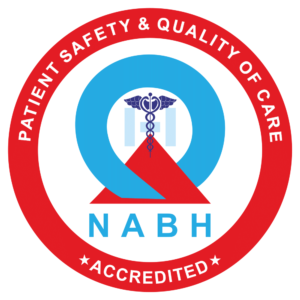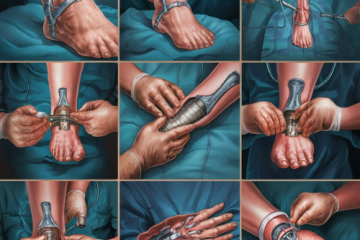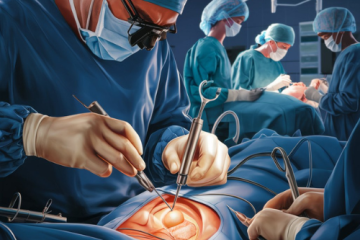Orthopedic injuries or surgeries can be a daunting experience. From the initial shock of diagnosis to the long road to recovery, it can be overwhelming. This is where physical therapy comes into action. Often underestimated, physical therapy is a cornerstone of orthopedic rehabilitation. It’s not just about exercises; it’s a comprehensive approach to restoring function, managing pain, and preventing future injuries.
Understanding the Role of Physical Therapy
Physical therapy is a specialized form of healthcare that focuses on restoring movement and functions. When applied to orthopedic conditions, it plays a pivotal role in:

- Pain Management: Physical therapists employ various techniques like manual therapy, heat, cold, and electrical stimulation to relieve pain and discomfort.
- Improving Range of Motion: Stiffness and limited mobility are common after orthopedic procedures. Physical therapy helps restore flexibility and joint movement for better Mobility.
- Strengthening Muscles: Targeted exercises rebuild muscle strength, essential for supporting the injured area and preventing re-injury.
- Balance and Coordination: Physical therapists help retrain your body’s balance and coordination, crucial for activities of daily living.
- Functional Restoration: The ultimate goal is to return you to your normal activities. Physical therapy focuses on rebuilding the skills needed for work, hobbies, sports, etc.
- Preventing Re-injury: By teaching proper body mechanics and posture, physical therapists empower you to protect your recovery and prevent future problems.
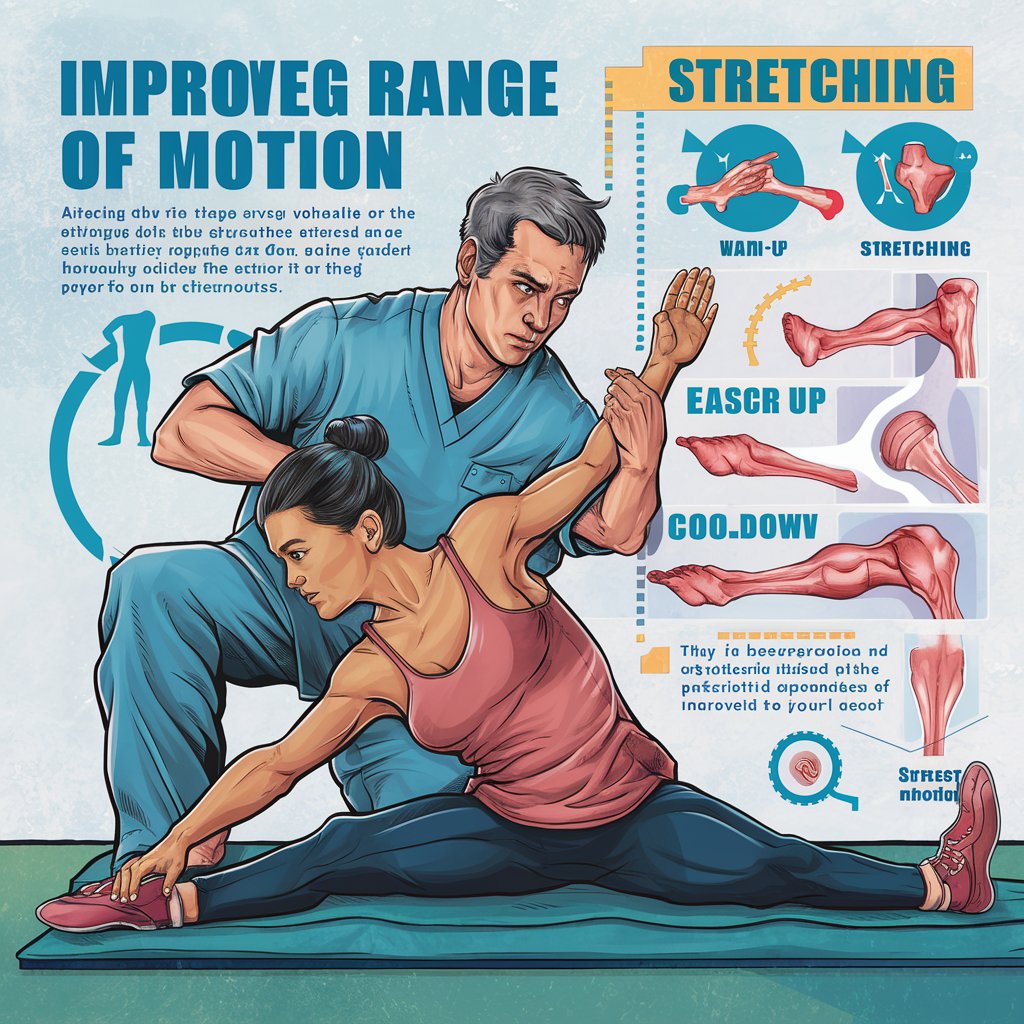
The Physical Therapy Process
- Evaluation: The therapist conducts a thorough assessment to understand your condition, pain levels, and functional limitations for exact Treatment.
- Goal Setting: Together with your therapist, you’ll establish realistic goals for your recovery. These could include reducing pain, increasing mobility, or returning to work.
- Treatment Plan: Based on the evaluation, a personalized treatment plan is developed. This might include exercises, manual therapy, procedures, and patient education.
- Progress Monitoring: Your therapist will regularly assess your progress and adjust the treatment plan as needed.
- Home Exercise Program: You’ll be taught exercises to perform at home to complement your in-clinic therapy.

Common Orthopedic Conditions and Physical Therapy
Physical therapy is effective for a wide range of orthopedic conditions, including:
- Joint Replacements: Knee, hip, and shoulder replacements often require extensive physical therapy to regain strength and mobility.
- Fractures: Physical therapy helps prevent stiffness, restore range of motion, and build strength after bone fractures.
- Sprains and Strains: Physical therapists can help reduce pain, swelling, and improve function after ligament or muscle injuries for better mobility.
- Rotator Cuff Injuries: Targeted exercises and manual therapy can help heal and strengthen the rotator cuff muscles.
- Osteoarthritis: Physical therapy can manage pain, improve joint function, and slow the progression of osteoarthritis.
- Back and Neck Pain: Physical therapists can address underlying causes of back and neck pain and provide pain relief strategies.
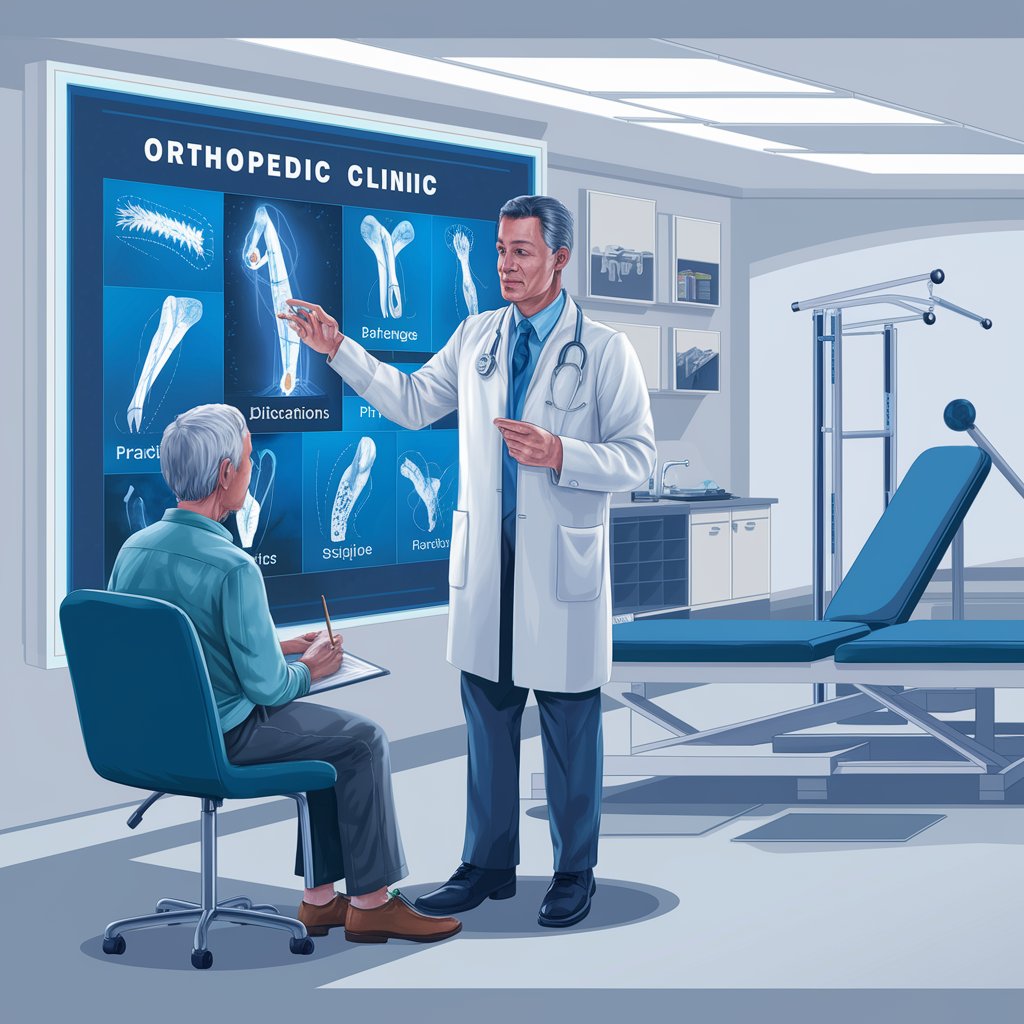
The Importance of Patient Involvement
While physical therapists are experts, your active participation is crucial for successful recovery. Here’s what you can do:
- Communicate openly: Share your concerns, pain levels, and goals with your therapist.
- Be consistent: Regular attendance and home exercise adherence are essential.
- Listen to your body: Pay attention to your body’s signals and don’t push yourself too hard.
- Set realistic expectations: Recovery takes time. Celebrate small victories and be patient.
Remember, physical therapy is not a quick fix. It’s an investment in your long-term health and well-being of your body. By working closely with your physical therapist, you can overcome orthopedic challenges and regain your independence and quality of life.
The Challenges of Physical Therapy in Orthopedic Recovery
Orthopedic injuries or surgeries can be daunting. The road to recovery is often long and challenging, and physical therapy is a cornerstone of this journey. While it offers immense benefits, it’s essential to acknowledge that physical therapy can also present its own set of challenges. Understanding these challenges can equip you with the knowledge and strategies to overcome them, maximizing the effectiveness of your therapy and accelerating your recovery.
Common Challenges in Orthopedic Physical Therapy

- Pain: Let’s face it, pain is a common companion during physical therapy. As you work to regain strength and mobility, you may experience discomfort or even acute pain. It’s crucial to communicate your pain levels honestly with your therapist. They can adjust the intensity of exercises or provide pain management techniques to help you through these moments.
- Frustration: Progress in physical therapy can be gradual, and setbacks are not uncommon. It’s essential to remember that every patient’s recovery journey is unique, and progress, while sometimes slow, is ultimately forward-moving. Patience and perseverance are key.
- Lack of Motivation: Maintaining motivation throughout the physical therapy process can be challenging. It’s easy to become demotivated by the time commitment, discomfort, or perceived slow progress. Setting realistic goals, finding a physical therapist you connect with, and celebrating small victories can help boost your motivation.
- Fear of Re-injury: After an injury or surgery, the fear of re-injury is natural. This fear can hinder your progress as you may hesitate to push yourself during exercises. Open communication with your therapist about your fears can help them address your concerns and provide reassurance.
- Time Constraints: Balancing physical therapy with work, family, and other commitments can be overwhelming. Finding the time for regular therapy sessions and home exercises can be a challenge. Effective time management and prioritizing your recovery can help you overcome this hurdle.
- Physical Limitations: Depending on the severity of your injury, you may experience physical limitations that impact your daily life and overall well-being. These limitations can be frustrating and may lead to feelings of isolation or dependence. Engaging in activities you enjoy, within your physical capabilities, can help improve your quality of life during recovery.
Overcoming These Challenges

- Open Communication: Maintaining open and honest communication with your physical therapist is vital. They can address your concerns, modify your treatment plan, and offer emotional support.
- Setting Realistic Goals: Establish achievable goals with your therapist. Breaking down larger goals into smaller, manageable steps can help you stay motivated and track your progress.
- Finding Support: Surround yourself with a support system of family, friends, or support groups. Sharing your experiences with others who understand can provide comfort and encouragement.
- Mindfulness and Relaxation Techniques: Incorporating mindfulness and relaxation techniques into your recovery can help manage pain and reduce stress. Practices like deep breathing, meditation, or yoga can be beneficial.
- Patience and Persistence: Remember that recovery takes time. Be patient with yourself and celebrate every milestone, no matter how small. Persistence is key to achieving your rehabilitation goals.
While physical therapy can present challenges, it’s essential to view it as an investment in your long-term health and well-being. By understanding the potential challenges and implementing strategies to overcome them, you can maximize the benefits of physical therapy and achieve a successful recovery.
Remember, your physical therapist is your partner in this journey. With their expertise and your dedication, you can overcome obstacles and regain your strength, mobility, and independence.
Conclusion: By reading the above post I hope you understand The Role of Physical Therapy in Orthopedic Recovery & their Challenges . If you have any Personal Queries you can schedule your Consultation with Dr. Sushil Kulkarni (Orthopedic & Joint Replacement Surgeon )

